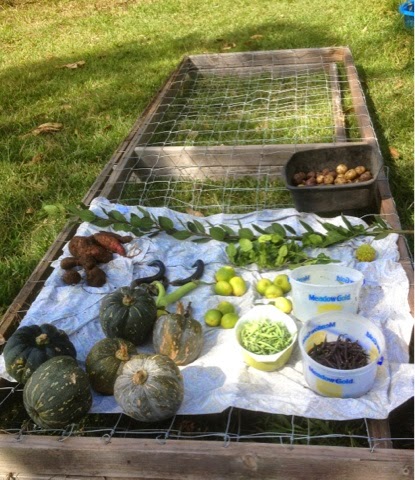We are growing our own onion starts this year. The seed is small and difficult for us to sow thinly. So the seedlings came up in clumps. Prior experience has shown us that we can allow the seedlings to grow together for a while, then when more developed they can easily be separated and transplanted. So for now they are in clumps.
Our Swiss chard is growing strongly. We sowed a mixed color package of seed. So we are seeing a rainbow of colors. While the colored ones are a tad tougher, the colors are appealing. We find that the chard responds very favorably to being mulched.
This time we tried growing long beets in addition to the standard round ones. They did just fine. Some got quite large before we got to them but they were still tender and sweet.
The sprouting broccoli is starting to produce buds. The broccoli is a bit crowded so we plan to remove the smaller plants, harvesting them for their leaves and small buds. That will give the larger plants more room to develop.
The spring we are seeing lots of the pineapple plants producing. Some are already growing the stem sucker, which becomes the replacement plant. You can see the sucker in the photo below growing out the side of the stem below the pineapple fruit. There are also several small slips growing from the base of the pineapple. These two can be planted but take longer to produce the next fruit.
Now for the bad news......
Aphids have moved into the kale. We didn't notice them at first until they had already caused a lot of damage. We got rid of them using soap spray, but even so, the kale took a nose dive two weeks layer. We have removed those damaged plants since we have plenty of other kales for picking.
The snap peas are succumbing to some sort of pea disease. We haven't identified the culprit yet.
Mildew is finally showing itself in the garden. For months now we have been anticipating it. The weather seemed ideal for mildew. The first crop to show mildew this time is the cowpeas.
Vog attack! The volcano has been acting up lately, sending bursts of vog our way. The taro has been burned and so have the gourd leaves. Long sections of gourd vines have been burned.


















































